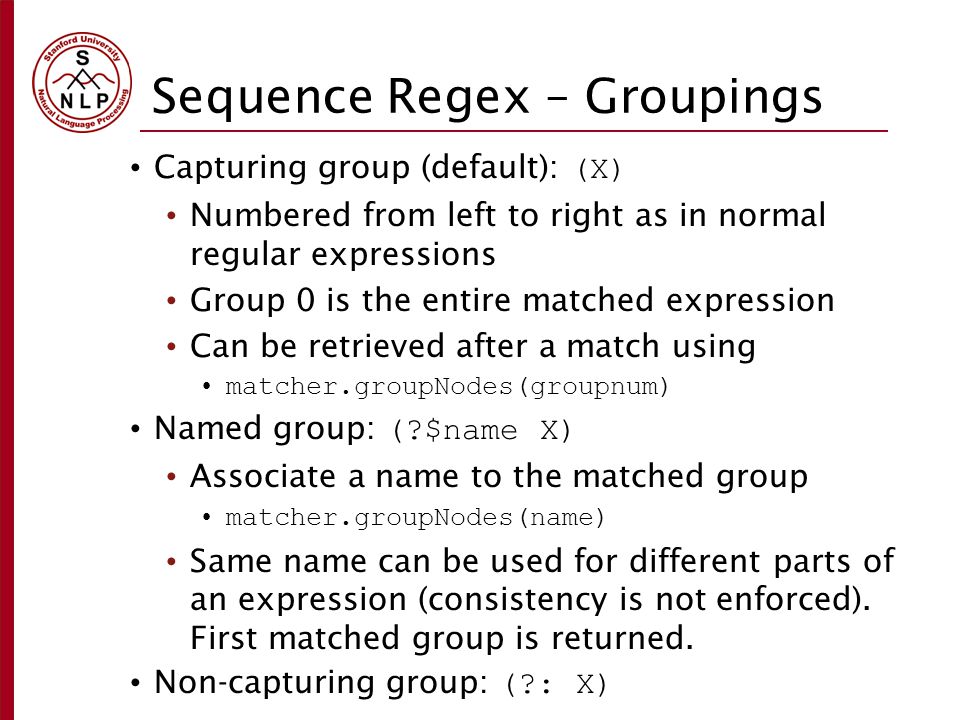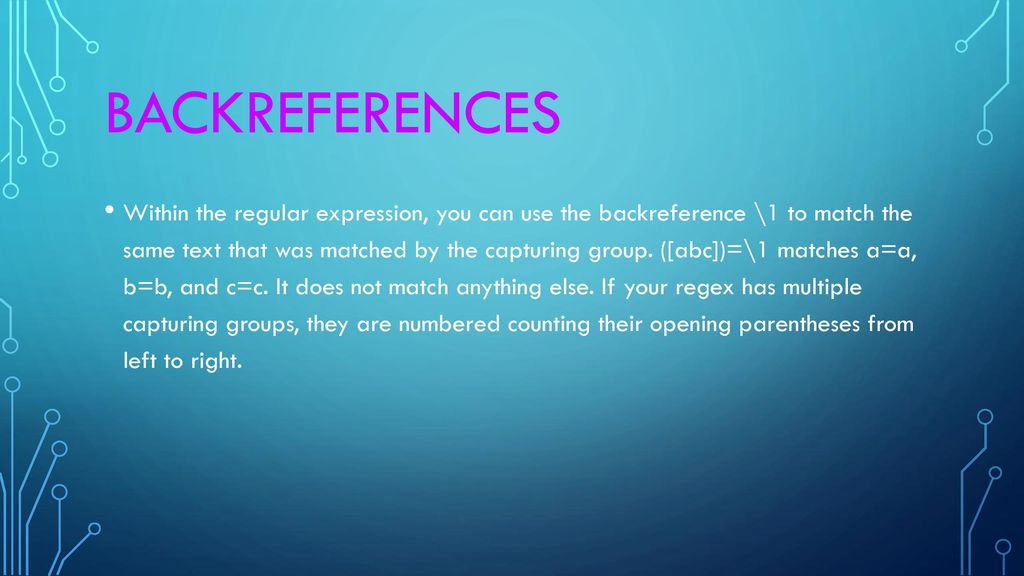

Matching the BRE "\(.*\).*" against "abcdef", the subexpression "(\1)" is "abcdef", and For this purpose, a null string shall be considered to be longer than no match at all. "(wee|week)(knights|night)" matches all ten characters of the string "weeknights".Ĭonsistent with the whole match being the longest of the leftmost matches, each subpattern, from left to right, shall match the ForĮxample, the BRE "bb*" matches the second to fourth characters of the string "abbbc", and the ERE

Matching characters and thus there is more than one such sequence starting at that point, the longest such sequence is matched. If the pattern permits a variable number of Is found, where "first" is defined to mean "begins earliest in the string". The search for a matching sequence starts at the beginning of a string and stops when the first sequence matching the expression Required, the user can specify equivalence classes containing all variations of the desired graphic symbol.

This means that if a character set contains two or more encodings for a graphic symbol, or if the strings searched contain textĮncoded in more than one codeset, no attempt is made to search for any other representation of the encoded symbol. Matching shall be based on the bit pattern used for encoding the character, not on the graphic representation of the character. To a sequence of characters defined by the pattern. matchedĪ sequence of zero or more characters shall be said to be matched by a BRE or ERE when the characters in the sequence correspond The concatenated set of one or more BREs or EREs that make up the pattern specified for string selection. 9.1 Regular Expression Definitionsįor the purposes of this section, the following definitions shall apply: entire regular expression The System Interfaces volume of IEEE Std 1003.1-2001 under regcomp(), regexec(), and related functions. Both BREs and EREs are supported by the Regular Expression Matching interface in The specific utilities using regular expressions. Some utilities, instead, support the Extended Regular Expressions (ERE)ĭescribed in Extended Regular Expressions any exceptions for both cases are noted in the descriptions of The Basic Regular Expression (BRE) notation and construction rules in Basic Regular Expressions shallĪpply to most utilities supporting regular expressions. Interpreted differently depending on the current locale, many features, such as character class expressions, provide for contextual Orderings, where these character sets are interpreted according to the current locale. Regular expressions are a context-independent syntax that can represent a wide variety of character sets and character set Regular Expressions (REs) provide a mechanism to select specific strings from a set of character strings. A newer edition of this document exists here Non-capturing groups are excluded from the result.Regular Expressions The Open Group Base Specifications Issue 6Ĭopyright © 2001-2004 The IEEE and The Open Group, All Rights reserved. Use the (?:) syntax to match non-capturing groups in your strings. log (result ) // 'Isabell' const notMatchingResult = regex. It turns out that you can define non-capturing groups that are not included in the result! // a regular expression with two non-capturing groups // and one capturing group const regex = / (?:Jane|John|Alison)\s(.*?)\s(?:Smith|Smuth) / const result = regex. There's nothing particularly wrong with this approach, but to extract the desired middle name, you have to remember and go back to the original regular expression because the result includes several irrelevant values ( 1 and 3). Even though you're only interested in the middle name represented by the entry at index 2 you have to deal with the data for all groups. In this example, the array holds the character sequences matching the three defined capturing groups.
#Regular expression not matching identical groups full
The array includes the full matching string at index 0 followed by the defined groups ( 1, 2, etc.). If the string matches the expression, the return value is an array holding all the specific information, otherwise exec returns null. Run the regular expression's exec method to test if a string is matching the expression. log (result ) // 'Jane Isabell Smith'Ĭonsole. The name should begin with Jane, John or Alison, end with Smith or Smuth but include a middle name between the first and last name. The regular expression above defines that I'm looking for a very particular name combination. a regular expression including three capture groups const regex = / (Jane|John|Alison)\s(.*?)\s(Smith|Smuth) / To understand how non-capturing groups work, let's look at an example highlighting the well-known capturing groups. If you already know what non-capturing groups in regular expressions are, here's the syntax: it's (?:) as in /(?:non-caputuring group)/.


 0 kommentar(er)
0 kommentar(er)
